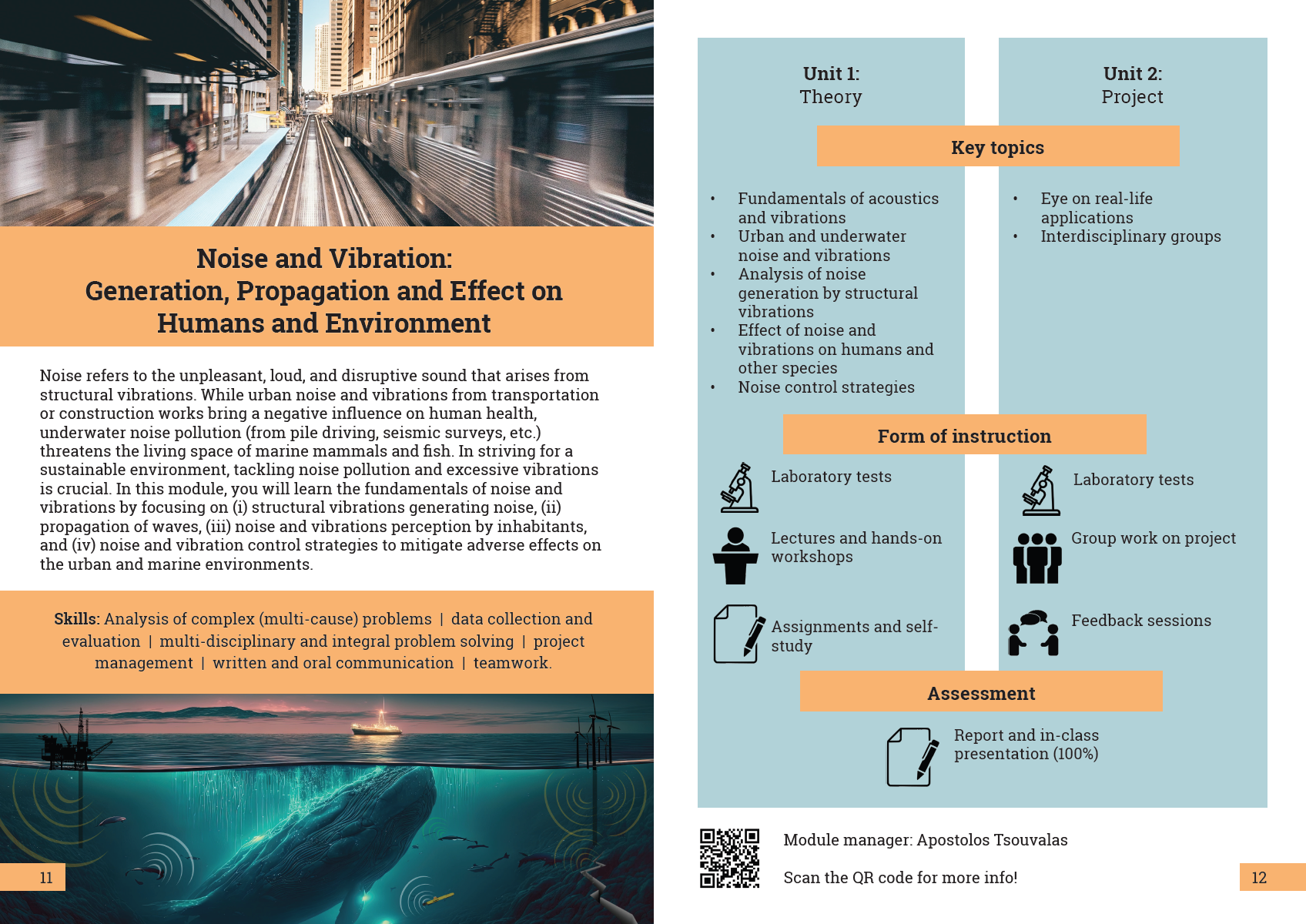Education & MSc Projects
Education
The lab is actively contributing in the education at Delft University of Technology (TU Delft). EVA members teach at the following courses at the Civil Engineering MSc.
- "CIEM5220 Applied Dynamics of Structures"
- "CIEM5000 Base: Structural Engineering"
- Cross-over Module on Noise&Vibration
CIEM5000 Base: Structural Engineering
In this module, the learning line on Modelling, data monitoring and sensing and Uncertainty and risk analysis is continued from the Faculty base module. Modelling of structures is central in the SE Track, since both mechanics and codes are in their essence models of real structural behaviour. Data and sensing is addressed sideways when it comes to the determination of mechanical properties and behaviour of materials and structures from laboratory experiments. Experimental results are discussed to illustrate. Designing skills are important for all structural engineers and in this module the goal is that students embrace principles and good “feeling” of structural design with “traditional” construction systems and materials.
CIEM5220 Applied Dynamics of Structures
In the module of "CIEM5220 Applied Dynamics of Structures", students will develop a conceptual understanding of the various loads that structures can experience, including earthquakes, wind, waves, and vehicle loads. They will learn to formulate and interpret mathematical models that describe the dynamic behavior of structures under these loads, and to analyze them as random signals. Students will also become proficient in using analytical methods to assess the dynamic response of structures to these loads, and to design structures with consideration for their response to wind, waves, and moving loads. Additionally, the course covers the dynamic response of structures in earthquake-prone regions, as well as the design of structures for renewable energy generation. Finally, students will learn to compute and evaluate the dynamic response of bridges, pavements, and railway tracks under various loading conditions and to use this information in design considerations. This course emphasizes the practical application of these concepts in real-world engineering problems.
Cross-over module on Noise and Vibrations
Noise is sound considered unpleasant, loud or disruptive to hearing, which has become an increasing concern throughout the world. While urban noise (from transportation, construction, etc.) brings a negative influence on human health, underwater noise (from pile driving, seismic surveys, etc.) threatens the leaving space of marine mammals and fish. Similar to noise, vibration is undesirable in many cases because it causes damage to engineering structures and discomfort to people. From the viewpoint of physics, noise is vibrations transmitted through a medium, such as air or water. Therefore, effective control of noise and vibration can be possibly be achieved at the source, path, or receiver. In the Cross-over module on Noise and Vibrations, students learn the fundamentals of noise and vibration, including structural vibrations, sound generation and transmission, perception of noise by inhabitants, conduct in-class/lab tests to obtain and analyse vibro-acoustic data, and use numerical tools to mitigate the adverse effects on the urban and marine environment.
MSc graduation topics
We collaborate often with companies for graduation topics, and it is feasible to undertake such a project. Prior to that please get in touch with one of our lab members to align a topic of interest. Please stay tuned for the lab's website where several MSc graduation topics will be uploaded. These topics are designed to improve the academic and professional skills of our students.
